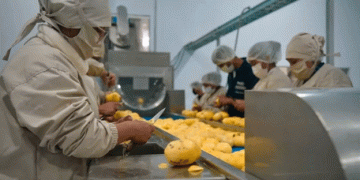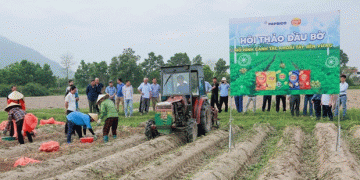Plant pathogens (phytopathogens) of food crops are a major constraint on agricultural production worldwide. These phytopathogens are responsible for huge yield losses during pre-harvest, storage and the transportation of crops. It has been estimated that globally, 20–30% of crops are lost annually due to plant diseases.1 Among the phytopathogens, there are more than 200 species of phytobacteria.2 Although different strategies have been applied to control these phytopathogens, they remain a challenge to agricultural production.
The most commonly used control strategies are antibiotics (e.g., streptomycin) and copper-based compounds. The widespread use of antibiotics in agriculture has, however, led to the evolution of antibiotic resistance among several phytopathogens. Streptomycin resistance has been observed in Erwinia, Pseudomonas and Xanthomonas spp. The antibiotic resistance genes (e.g., strAB) in these phytopathogens can undergo horizontal gene transfer resulting in the spread of antibiotic resistance. The continuous use of copper results in its accumulation in the environment, which has been linked to human health problems, toxic effects on flora and fauna, and the development of copper-tolerant phytopathogens. Human and animal health concerns that have been associated with copper toxicity include gastrointestinal, hepatic, reproductive and neurodegenerative disorders such as Alzheimer’s disease. Indian childhood cirrhosis is a disorder that has been linked to the intake of large quantities of copper in genetically susceptible individuals. Copper-induced toxicity has also been reported to result in impaired climbing capability and increased mortality in Drosophila melanogaster. Symptoms of excess copper in plants include impaired growth of roots and shoots, chlorosis, damaged photosynthetic pigments and sometimes death.
Contamination of soil with copper damaged the photosynthetic pigments and interfered with the growth and gas exchange of three vegetables (Brassica alboglabra, Brassica chinensis and Chrysanthemum coronarium). Copper oxide nanoparticles were also found to interfere with the rate of germination, and growth of roots and shoots of spring barley (Hordeum sativum distichum). Resistance to copper-based bactericides is also a challenge in the control of phytopathogens. Copper resistance has been observed in several phytopathogens including Pseudomonas and Xanthomonas spp.
One study reported that 80% of 35 Pseudomonas syringae pv. phaseolicola strains isolated from snap bean fields exhibited resistance to copper. This is a huge concern considering that copper application is the current primary method of control for these phytopathogens. Several countries have either banned or limited the use of copper-based plant protection compounds. As a result, new control strategies have been considered and studied. These include the use of bacteriophages as potential biocontrol agents.
Bacteriophages (phages) are viruses with the ability to propagate within bacterial cells. The interest in phages as biocontrol agents is attributed to their nontoxic nature to eukaryotic cells, self-replication, host specificity, ability to overcome resistance and ease of production. Phage cocktails in particular present a viable option for broadening the phage host range, limiting the emergence of bacterial resistance while maintaining the lytic activity of the phages. It is therefore important that the design used to formulate a phage cocktail should result in the most effective cocktail against the pathogen. It is also critical that certain factors are considered during the formulation and application of a phage cocktail: their stability, the production time and cost of complex cocktails, the potential impact on untargeted bacteria, the timing of phage application, and the persistence in the plant environment. Continuous monitoring is required to ensure that the efficacy of a cocktail is sustained due to the dynamic nature of phages. Although phage cocktails are considered as a plausible biocontrol strategy of phytobacteria, more research needs to be done to understand the complex interaction between phages and bacteria in the plant environment, and to overcome the technical obstacles.
Reference: Kering, K.K., Kibii, B.J. and Wei, H. (2019), Biocontrol of phytobacteria with bacteriophage cocktails. Pest. Manag. Sci., 75: 1775-1781. https://doi.org/10.1002/ps.5324






